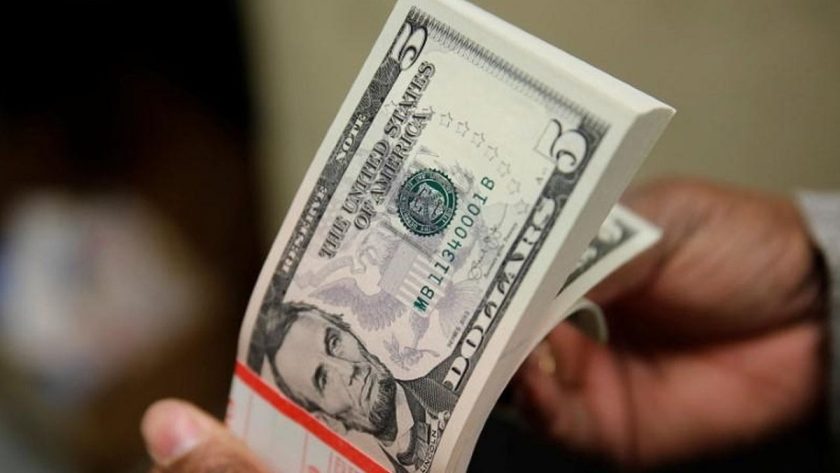US Dollar Slides Ahead of Inflation Figure
The dollar remained relatively weaker against most of its major peers on Monday, as traders wait for the Federal Reserve to acknowledge an end to its hiking cycle while trying to hedge the risk of a potential recession.
The dollar index, which measures the currency against six rivals, was down 0.1% in late morning trading at 101.21, a better showing than the one-year low of 100.78 reached last month.
The Fed raised rates by 25 basis points last week but sounded slightly more cautious than peers on the outlook, dropping guidance about the need for future hikes.
“Everybody keeps looking for the economic activity and the data to support the idea that there’ll be a recession in the U.S. whether it’s in the second half of this year (or) in the final quarter,” said Joe Francomano, portfolio manager at Gelber Group LLC in New York.
“But then you keep getting these strong U.S. employment data that shows strength and continued wage pressures. So, it seems we keep putting off the inevitable or the inevitable will never come as far as the recession is concerned.”
Fed funds futures traders are now pricing for the fed funds rate to reach 4.993 in July, and remain below that all year. The Fed’s target range stands at 5% to 5.25%, having risen rapidly from 0% since March 2022.
“Central bank policy divergence remains in the driver’s seat and continues to underpin European currencies at the dollar’s expense,” said Joe Manimbo, senior market analyst at Convera.
“The Fed’s latest rate hike could be its last while the Bank of England is expected to hike this week and further over the coming months, buoying the pound.”
Sterling hit a more than one-year peak against the dollar on Monday, with the pound traded as high as $1.2668, its highest since April 2022, but slipped slightly below that, and was last seen up 0.11% at $1.2641. The pound remains in focus this week ahead of an expected Bank of England rate increase on Thursday, and has also been firming versus the euro.
Against the dollar, the euro has rallied nearly 16% from September lows, and is trading little changed on the day at $1.1022, supported by expectations the European Central Bank will keep interest rates high for longer than the Fed. The ECB last week also slowed the pace of its interest rate increases but signaled more tightening to come.
Traders remain watchful of the debt ceiling impasse on Capitol Hill, with the Treasury Secretary warning the government might be unable to pay debts by June 1. Meanwhile, U.S. inflation data due on Wednesday could indicate whether the Fed must do more to rein in inflation.
Elsewhere, the dollar was flat against the yen at 134.885.
US consumers’ inflation expectations mixed in April, NY Fed report shows
The regional Fed bank reported as part of its April Survey of Consumer Expectations that respondents see inflation one year from now at 4.4%, down from 4.7% in the March survey. Inflation three years from now was seen at 2.9%, compared to 2.8% in March, while five years from now it was expected to be at 2.6%, versus 2.5% in the prior month.
The Fed has been pressing forward aggressively with interest rate rises to lower some of the highest inflation pressures in decades. The U.S. central bank raised rates last week in an action that may be the last of its current tightening campaign, as inflation pressures have started to ease.
At his press conference after the release of the policy decision, Fed Chair Jerome Powell said, “Despite elevated inflation, longer-term inflation expectations appear to remain well-anchored,” a sign he believes the public remains confident the central bank will bring price pressures back to its 2% target.
The New York Fed report also found that the banking sector stress that began nearly two months ago, spurring fears about the health of the financial system and forcing the central bank to provide extensive liquidity to the financial system, hasn’t left much of a mark on consumers’ attitudes so far.
The April survey found “mixed” views on credit access, noting “both the share of households reporting it is easier and the share reporting it is harder to obtain credit now than one year ago declined.”
The report also found that perceptions in April surrounding respondents’ current financial situation improved, while their expectations “deteriorated slightly, with fewer respondents expecting to be better off a year from now.”
It also said that households still expected to see rising earnings, although spending was projected to moderate to a 5.2% gain, the weakest since September 2021, from the 5.7% forecast in March. Survey respondents also said they expect higher unemployment and a greater probability of losing their jobs, as well as a harder time finding new work.

